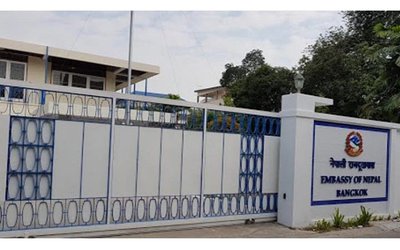
As its ritual response to all plane accidents in the past, the Nepal government announced the formation of the Investigation Commission. As the government is harping populist agenda, it has decided to give a public holiday on Monday to mourn the fatal crash of the 9N-ANC ATR 72.
However, these are not permanent solutions to ensure air safety. At a time when the air operators continue to influence policy making, particularly regulatory bodies, nothing can work.
Media often reports that the head of Civil Aviation Authority Nepal (CAAN) is heavily under the influence of a few big air carrier which can transfer the Director General and other senior officials on their wish. This is the reason Nepal's regulatory authority is regarded as weak and inefficient.
Following a major fatal accident, experts are expecting that the government would come up with stringent measures to improve Nepal's air safety.
After the accident, an emergency meeting of the Council of Ministers did not make any major decisions toward safety.
In the same cabinet meeting, the government formed a five-member investigation commission to find out the truth and facts about the crash of the Yeti Airlines aircraft in Pokhara this morning.
Constituting a Commission under the convener of Tourism and Civil Aviation Secretary Nagendra Ghimire as convener, the government hopes that the probe commission will identify the causes of the plane accident and submit a report along with suggestions for preventing the occurrence of such accidents in the coming days.
The members of the commission include aviation experts Deepak Prakash Bastola (retired Major General) and Sunil Thapa (retired Captain) and aircraft repair engineer Ekraj Jung Thapa. Joint-Secretary at the Ministry of Culture, Tourism and Civil Aviation and Buddhi Sagar Lamichhane is the member-secretary of the commission.
The committee will submit its report in 45 days and the government would make arrangements for immediately executing the suggestions contained in the report once the commission submits it.
Commission after Commissions
Since the first plane crashed in 1955 in Simara, this is the 104 planes crashed with a total fatality of 916 and what all the governments did is constituting a commission. No one took any steps to implement the report.
Former Director Generals of Civil Aviation Authority Birendra Bahadur Deuja and former DG Ratish Chandra Lal Suman hold the view that the government should implement the recommendations of such probe commissions.
On Saturday (January 15), the plane bound for Pokhara from Kathmandu crash-landed near the airport- in the Seti Gorge and the issue of air safety and airlines is again in the public debate.
The first such dreadful plane accident occurred in domestic aviation in Nepal where seventy-two persons including four crew members were onboard. Those who died in the fatal accident include 53 Nepali, five Indians, four Russians, each Irish, Australian, Argentinean, and France, and two Korean.
Eyewitness Narrations
Resident Bishnu Tiwari, who rushed to the crash site near the Seti River to help search for bodies, said the rescue efforts were hampered by thick smoke and a raging fire. "The flames were so hot that we couldn't go near the wreckage. I heard a man crying for help, but because of the flames and smoke we couldn't help him," Tiwari said. It was not immediately clear what caused the accident. A witness said he saw the aircraft spinning violently in the air after it began landing, watching from the terrace of his house. Finally, Gaurav Gurung said, the plane fell nose-first towards its left and crashed into the gorge. The aviation authority said the aircraft last made contact with the airport from near Seti Gorge at 10:50 a.m. before crashing.
The twin-engine ATR 72 aircraft, operated by Nepal's Yeti Airlines, was flying from the capital, Kathmandu, to Pokhara, a 27-minute flight.
The aircraft's fuselage was split into multiple parts that were scattered down the gorge.
Pokhara, located 200 kilometers (125 miles) west of Kathmandu, is the gateway to the Annapurna Circuit, a popular hiking trail in the Himalayas. The city's new international airport began operations only two weeks ago.
Safety Record of ATR
The safety record of Yeti Airlines is very poor in Nepal as its sister airline Twin otter crashed in April 2022 killing 23 passengers on board. However, this is the first accident in the ATR type of plane involved.
However, the ATR-72, which has been used by airlines around the world for short regional flights, has several incidents of the deadly accident. Introduced in the late 1980s by a French and Italian partnership, the aircraft model has been involved in several deadly accidents over the years.
In Taiwan, two earlier accidents involving ATR 72-500 and ATR 72-600 aircraft happened just months apart. In July 2014, a Trans Asia ATR 72-500 flight crashed while trying to land on the scenic Penghu archipelago between Taiwan and China, killing 48 people onboard.
An ATR 72-600 operated by the same Taiwanese airline crashed shortly after takeoff in Taipei in February 2015 after one of its engines failed and the second was shut down, apparently by mistake.
The 2015 crash, captured in dramatic footage that showed the plane striking a taxi as it hurtled out of control, killed 43, and prompted authorities to ground all Taiwanese-registered ATR 72s for some time.
Tanzania ceased all flights in 2016 and later went out of business. ATR identified the plane involved in Sunday's crash as an ATR 72-500 in a tweet. According to plane tracking data from flightradar24.com, the aircraft was 15 years old and "equipped with an old transponder with unreliable data."
It was previously flown by India's Kingfisher Airlines and Thailand's Nok Air before Yeti took it over in 2019, according to records on Airfleets.net. Yeti Airlines has a fleet of six ATR72-500 planes, company spokesperson Sudarshan Bartaula said.
Sunday's crash is Nepal's deadliest since 1992 when all 167 people aboard a Pakistan International Airlines plane were killed when it plowed into a hill as it tried to land in Kathmandu.
The latest crash of a domestic aircraft justifies the European Union's decision to ban airlines from Nepal from flying into the 27-nation bloc since 2013. European Union cites weak safety standards. Although the International Civil Aviation Organization cited improvements in Nepal's aviation sector, the EU continues to demand administrative reforms.
However, the government is yet to be ready to table the bill which is in the Ministry of Culture, Tourism and Civil Aviation. After the latest fatal accident, the pressure is now on the government.
- Nepali men, women squads enter Kho Kho World Cup finals
- Jan 19, 2025
- Nepal Visit Year 2025 And Chinese New Year Announced
- Jan 19, 2025
- Weather Forecast: Partly Cloudy In Sudur Paschim and Karnali Provinces and Fair In The Rest
- Jan 19, 2025
- Kathmandu-Tarai/Madhes Expressway Project: 37.56 Percent Completed, President Paudel Paid A Site Visit
- Jan 18, 2025
- Nepal Welcomes The Recent Agreement For The Release of Hostage And Ceasefire In Gaza
- Jan 17, 2025















